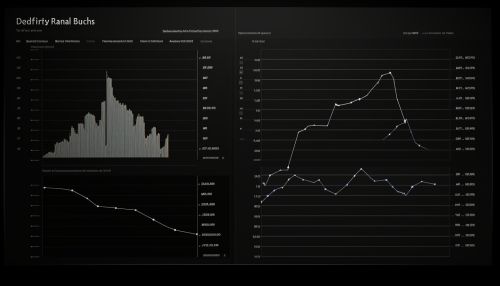Death rate
Definition
The death rate, also known as the mortality rate, is a measure of the number of deaths in a particular population, scaled to the size of that population, per unit of time. It is distinct from morbidity, which refers to either the prevalence or incidence of a disease, and does not account for the deaths as a separate component.
Measurement
Death rates are typically expressed in units of deaths per 1,000 individuals per year. This allows for the comparison of death rates across different populations, irrespective of their size. The death rate is calculated by dividing the number of deaths by the population size, and then multiplying the result by 1,000.


Types of Death Rates
There are several specific types of death rates, each of which measures a particular kind of death in relation to the total population.
Crude Death Rate
The crude death rate is the total number of deaths per year per 1,000 people. As it does not take into account the age distribution of the population, it is not a true representation of the probability of death for a given individual.
Age-Specific Death Rate
The age-specific death rate is the total number of deaths per year per 1,000 people of a specific age.
Cause-Specific Death Rate
The cause-specific death rate is the mortality rate among those who die from a specific cause.
Infant Mortality Rate
The infant mortality rate is the number of deaths of infants under one year old per 1,000 live births. This rate is often used as a marker of the level of health in a country.
Factors Influencing Death Rates
Various factors can influence death rates, including but not limited to healthcare quality and access, socioeconomic status, and lifestyle choices.
Healthcare
Access to quality healthcare can significantly influence death rates. Preventative healthcare, early diagnosis, and effective treatment can reduce death rates, particularly for conditions such as heart disease and cancer.
Socioeconomic Status
Socioeconomic status is a significant predictor of mortality. Individuals in lower socioeconomic groups tend to have higher death rates, due to factors such as reduced access to healthcare, poorer living conditions, and higher levels of stress.
Lifestyle Choices
Lifestyle choices such as diet, exercise, smoking, and alcohol consumption can significantly affect death rates. For example, countries with high levels of smoking and alcohol consumption often have higher death rates from lung cancer and liver disease.
Global Variations
Death rates can vary significantly between different countries and regions. These variations can be due to differences in healthcare systems, socioeconomic status, and lifestyle factors.
